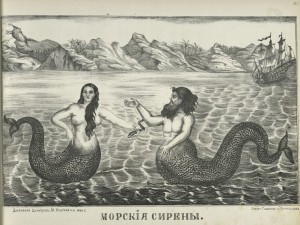

Last week, Animal Planet aired a fictional mockumentary about mermaids. From an educational perspective, it was a disaster that was rightfully described as “the rotting carcass of science television” by Brian Switek. As Dr. M on Deep Sea News pointed out, one of the troubling results of this TV special was the discovery that some people believe that mermaids are real.
When I pointed out on Facebook and twitter that mermaids do not exist and that I hoped none of my friends believe otherwise, it inspired a long and interesting discussion. Someone asked why it matters if people believe in mermaids, as they felt that a sense of whimsy among the public is a good thing. Someone pointed out that scientists are discovering amazing new species all the time. More than a few people said “anything is possible.”
Sure, scientists discover new species all the time, but while finding a new species of monkey, orchid, or jellyfish can be interesting, it is not proof that “anything is possible” and it is not the same thing as finding a species of talking, thinking humanoids with fish tails on the lower half of their bodies. There’s a big and important difference between enjoying fantasy novels and wishing that certain fantastical creatures exist (i.e. having a sense of whimsy) and genuinely believing that those creatures really do exist.
These people don’t believe that in the vast and unexplored ocean, there may be some bizarre undiscovered species still out there. They believe that talking, thinking humanoids with fish tails on the lower half of their bodies exist and are acknowledged as existing by the scientific community. This displays a troubling lack of awareness of reality that likely is not limited to a belief in mermaids. For the benefit of those who have paid so little attention to what’s going on in the real world that they believe mermaids exist, here are five other things that you should, but likely do not, know about the oceans.

